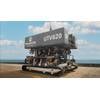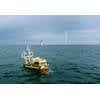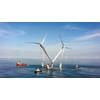Recent years have seen a rapid increase in surface shipping operations in Arctic regions but nothing has been done for the subsea commercial shipping. New submarine technology to open up the Arctic Ocean's northern passage for year-round commerce is now technically feasible.
The voyage above the ice is extremely difficult exacerbated by extreme low temperatures, short warm season, thick icing of exposed topside equipment, changing ice cap movements, and a lack of suitable rescue search operations.
Faster cargo submarines, using direct routes across the Arctic Ocean would require less power and fuel could provide a greater economic advantage than larger more powerful surface ships.
There is a beautiful, relatively warm ocean just under the thin ice cap that covers the Arctic Ocean that could be used for many types commercial transportation possibilities. Transporting petroleum products such as liquefied natural gas (LNG) would be ideal for this type of shipping.


















 August 2025
August 2025



